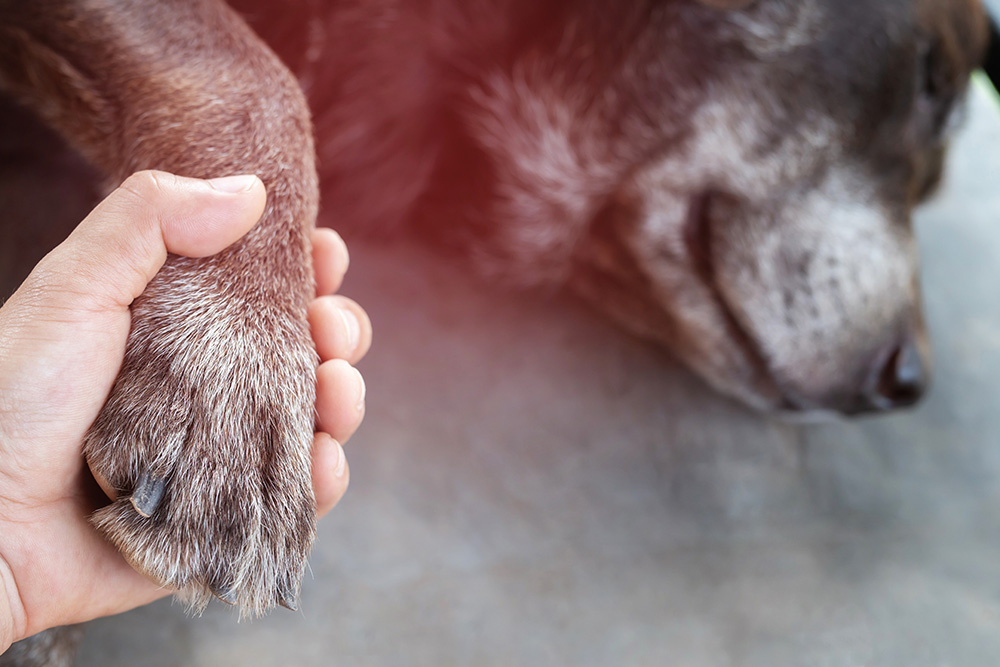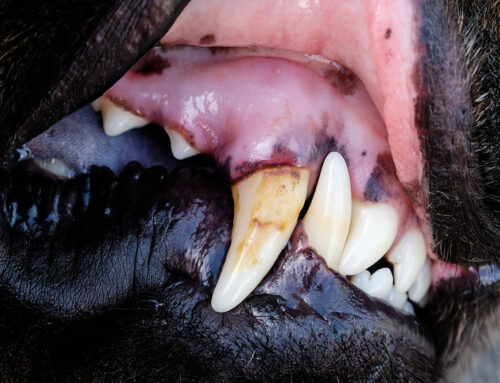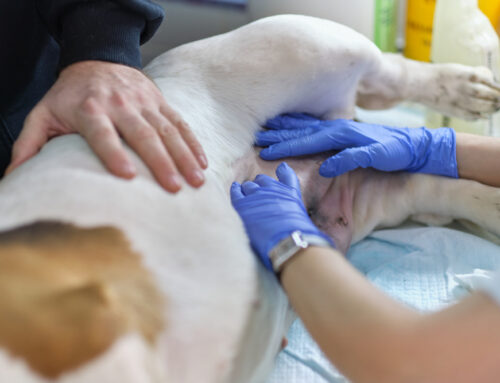Foreign Body Ingestion in Pets: When Curiosity Turns Dangerous
It starts innocently enough: a missing sock, a chewed-up pair of glasses, a kid’s toy left unattended on the counter. A few hours later, your dog vomits or your cat skips dinner- and suddenly you’re wondering if this is just an upset stomach or something much more serious.
At Creature Comforts Veterinary Service, we see these emergencies every day. Pets explore the world with their mouths, and even the most vigilant families can find themselves facing a medical crisis when an object goes down the wrong way. Swallowed items can pass uneventfully, but others become lodged and cause life-threatening blockages that require urgent veterinary care.
When to Suspect a Foreign Body
The first signs of a gastrointestinal obstruction are often subtle: a pet that vomits once, refuses breakfast, or just seems quieter than usual. But when symptoms persist, it’s time to worry.
Early warning signs include:
- Repeated vomiting or retching
- Loss of appetite or refusal to eat
- Straining without stool
- Lethargy or hiding behavior
- Restlessness or abdominal discomfort
Dogs may also drool excessively or stretch repeatedly, while cats often sit in a hunched position and resist being touched.
Types of Obstructions
The type of object- and how it interacts with the digestive tract- determines the level of danger:
- Complete obstructions prevent food or water from passing, leading to rapid dehydration and decline without immediate intervention.
- Partial obstructions may cause intermittent vomiting and weight loss, easily mistaken for a mild stomach issue.
- Linear obstructions, caused by items like string, ribbon, or dental floss, can cinch the intestines into pleats, risking tissue tearing or rupture.
Why Minutes Matter
A swallowed object can shift from harmless to life-threatening in a matter of hours. What begins as vomiting may progress to intestinal rupture and sepsis if the blockage isn’t cleared.
Timeline of progression:
- Early stage: vomiting, mild dehydration, discomfort.
- Intermediate: persistent retching, electrolyte imbalance, escalating pain.
- Advanced: intestinal damage requiring surgery and intensive care.
Waiting too long can mean a longer hospital stay and a more complicated recovery. Common culprits include corncobs, toys, magnets, socks, and even pennies, which cause zinc toxicity. Everyday hazardous household items for pets can turn a normal evening into an emergency.
Our emergency team is available 24/7 to assess and treat these cases, ensuring that pets receive life-saving care when every minute counts.
How Foreign Body Obstructions Are Diagnosed
The first step in any suspected obstruction is stabilization- restoring hydration and managing pain. Once your pet is stable, our veterinarians perform a full examination and diagnostics to determine the location and severity of the problem.
Clues and diagnostic tools include:
- Physical exam: signs like a painful abdomen or, in cats, string visible under the tongue.
- Radiographs (X-rays): can reveal gas buildup or visible objects.
- Ultrasound: evaluates intestinal movement, blood flow, and the presence of fluid or tissue damage.
- Laboratory testing: checks electrolytes, organ function, and screens for other causes such as pancreatitis or parvovirus.
Our hospital’s advanced diagnostic equipment allows for fast, precise results so treatment can begin right away.
Treatment Options
Vomiting and Monitoring
If the object was swallowed recently and is small or smooth, vomiting may be safely induced under veterinary supervision. Hospitalization for fluids and repeat imaging may confirm whether the object passes naturally. Never attempt to make your pet vomit at home- it can be dangerous without medical oversight.
Endoscopy
For objects lodged in the esophagus, stomach, or upper small intestine, veterinary endoscopy is sometimes an option. This minimally invasive procedure uses a flexible camera to retrieve foreign material without abdominal surgery. Pets recover faster and experience less discomfort compared to traditional operations.
Surgery
When an obstruction is complete, sharp, or unreachable by scope, surgery becomes necessary. Depending on the location, procedures may include:
- Gastrotomy: opening the stomach to remove the object.
- Enterotomy: opening a section of the intestine.
- Resection and anastomosis: removing damaged tissue and reconnecting healthy intestine.
Our skilled surgical team performs these procedures with precision using the latest tools and monitoring equipment. Visit our surgery page to learn about our approach to anesthesia, pain control, and recovery.
The Role of the ICU
Surgery is only the beginning of recovery. Post-operative monitoring in the ICU is critical for stabilizing hydration, controlling pain, and preventing complications such as infection or intestinal leakage.
Our team provides continuous care with IV fluids, anti-nausea medication, and early nutritional support to help the gut recover normal function. As an AAHA-accredited hospital, we follow strict safety standards for anesthesia, surgery, and recovery monitoring to ensure the highest quality of care.
Possible Complications

Even with expert treatment, intestinal surgery carries risks that require close observation:
- Suture breakdown or leakage leading to peritonitis
- Ileus, or sluggish gut movement
- Septic peritonitis if bacteria leak into the abdomen
- Aspiration pneumonia from repeated vomiting
- Short bowel syndrome affecting long-term nutrient absorption
Our veterinarians monitor each patient closely until appetite, energy, and bowel function normalize.
Home Care After Surgery
Healing continues at home, and following discharge instructions carefully makes all the difference.
Post-surgery care includes:
- Activity restriction: dogs should be leash-walked only for bathroom breaks; cats should rest in a quiet room with paper or shredded litter.
- Incision checks: monitor daily for swelling or discharge.
- Cone use: always keep on except during supervised breaks.
- Feeding: offer small, bland meals; avoid treats or table scraps until cleared by your vet.
Recovery isn’t just about rest- safe mental stimulation keeps pets calm and engaged. Try brain games for dogs or DIY cat enrichment toys to help keep your pet (and you) from going stir crazy. For crate training challenges, these dog crate rest tips can help keep everyone sane during the healing process.
Prevention and Planning
Preventing foreign body ingestion begins with awareness. Everyday objects- from trash and laundry to rubber bands and children’s toys- can pose hidden dangers.
Prevention strategies include:
- Storing trash and laundry out of reach
- Supervising playtime and avoiding small or brittle toys
- Choosing sturdy chew toys designed for your pet’s size
Training also plays a key role. Teaching “leave it” and “drop it” commands can stop a dangerous situation before it starts. For dogs prone to scavenging, consider basket muzzle training to prevent accidental ingestion.
Finally, plan ahead financially. Emergencies rarely happen at convenient times, but understanding your options- such as pet insurance coverage or payment arrangements- can ease decision-making when time is critical.
Creature Comforts offers flexible payment solutions to help families get care quickly without delay.
When to Call for Help
If you suspect your pet has swallowed something foreign- even if they seem fine- don’t wait for symptoms to worsen. Prompt evaluation can be the difference between a simple treatment and an invasive surgery.
At Creature Comforts Veterinary Service, our experienced veterinarians provide emergency and surgical care for dogs, cats, and exotic pets 24 hours a day. We’re here to guide you from diagnosis to recovery with compassion, expertise, and the advanced tools your pet deserves.
Call us immediately or visit our emergency services page for help anytime. You can also request an appointment online for non-urgent cases or follow-up care.
Because when curiosity turns dangerous, fast action- and the right team- can save your pet’s life.







Leave A Comment